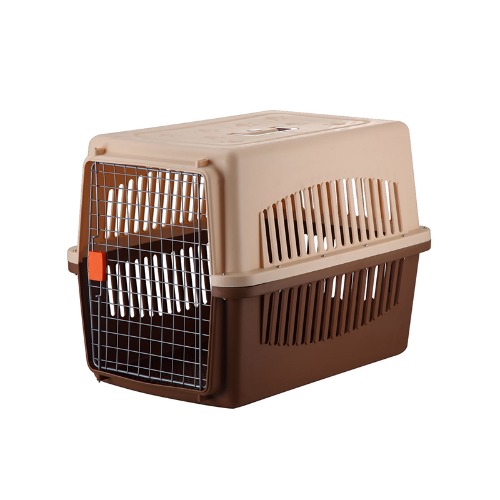As sustainability becomes a growing priority across industries, the pet product sector is also seeing a significant shift toward environmentally friendly materials and designs. One of the standout trends in this space is the increasing demand for eco-friendly pet carrying cage. These products not only support safer travel for animals but also align with the values of environmentally conscious consumers.
Buyers—particularly in North America, Europe, and parts of Asia—are placing more emphasis on responsible sourcing, recyclable materials, and reduced environmental impact when selecting travel accessories for their pets. As a result, manufacturers of carrying cage are adapting to meet these new expectations.

What Makes a Carrying Cage Eco-Friendly?
An eco-friendly pet carrying cage typically includes materials and production methods designed to reduce its carbon footprint. These may include:
Recycled plastics: Sourced from post-consumer waste and reprocessed into durable components such as the cage base or outer shell.
Natural fabrics: Use of hemp, organic cotton, or bamboo fibers in padding, covers, and internal linings.
Non-toxic treatments: Avoiding chemical coatings and instead using water-based finishes or dyes that are safe for both pets and the environment.
Modular design: Parts that can be replaced instead of discarded, encouraging long-term use and reduced waste.
These elements not only benefit the environment but also reassure buyers that their purchase supports a broader mission of sustainability.
Responding to Consumer Expectations
In today's market, functionality and safety remain critical, but more buyers are factoring in environmental responsibility as a decision-making point. Distributors and retailers are also increasingly requesting product certifications—such as RoHS (Restriction of Hazardous Substances) or REACH compliance—to verify that carrying cages meet sustainability standards.
Some products even feature eco-labels or QR codes on packaging, providing transparency on materials used, carbon footprint, and end-of-life disposal options. As customers become more informed, these details play an important role in product appeal and trust.
Lightweight and Sustainable Materials
Another trend driving the popularity of eco-friendly carrying cages is the use of lightweight, biodegradable materials. Manufacturers are exploring new composites that maintain durability while offering a lower environmental impact. Examples include:
PLA (polylactic acid) plastics made from corn starch
Compressed paperboard with waterproof coatings
Cork panels reinforced with natural resins
These options reduce the overall product weight, which can also help lower transportation emissions—a win for both logistics and sustainability.
Global B2B Market Impact
For wholesalers, pet shops, and online retailers, offering eco-friendly carrying cages provides a competitive advantage. With rising demand in global markets—especially in regions with strong environmental regulations—stocking sustainable travel accessories aligns well with market trends and opens up new sales opportunities.
B2B buyers often inquire about a product’s full environmental impact, including factory practices, packaging methods, and recyclability. This shift has encouraged pet product manufacturers to improve supply chain transparency and adopt greener production technologies.
Sustainable Packaging and Logistics
Sustainability in carrying cages doesn’t stop with the product itself. Many manufacturers are also focusing on eco-conscious packaging—using cardboard, biodegradable plastics, or even reusable fabric bags instead of foam and single-use plastics.
Bulk orders are increasingly shipped using optimized packing designs to reduce wasted space, cutting down on emissions during global transport. For buyers who manage distribution at scale, these details can have a big impact.


 English
English Español
Español Deutsch
Deutsch

